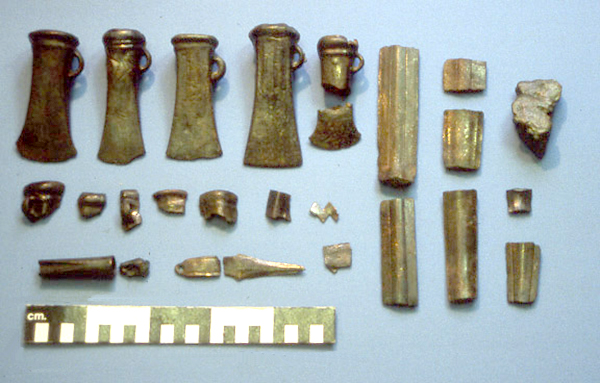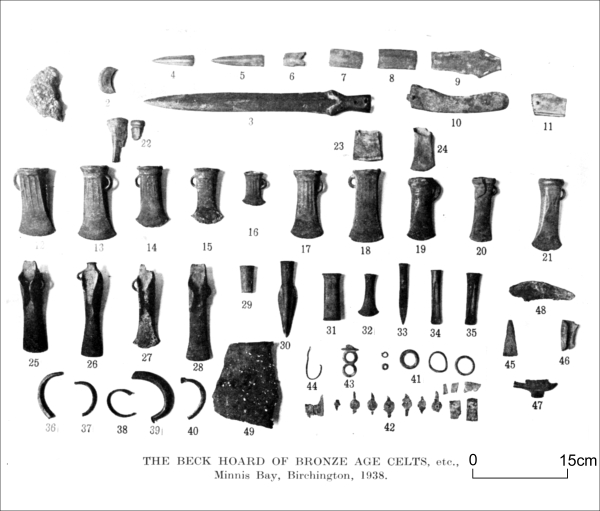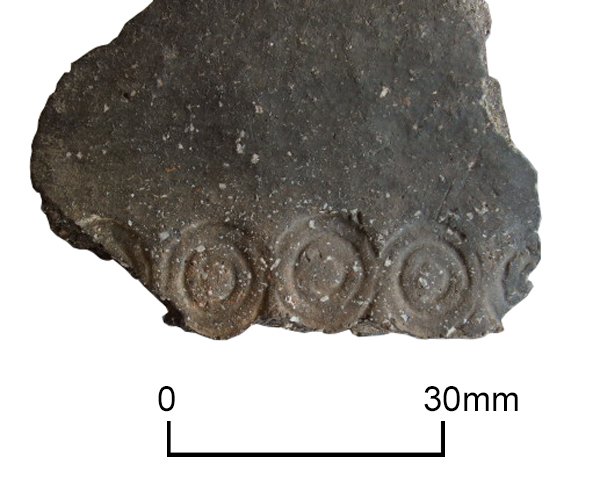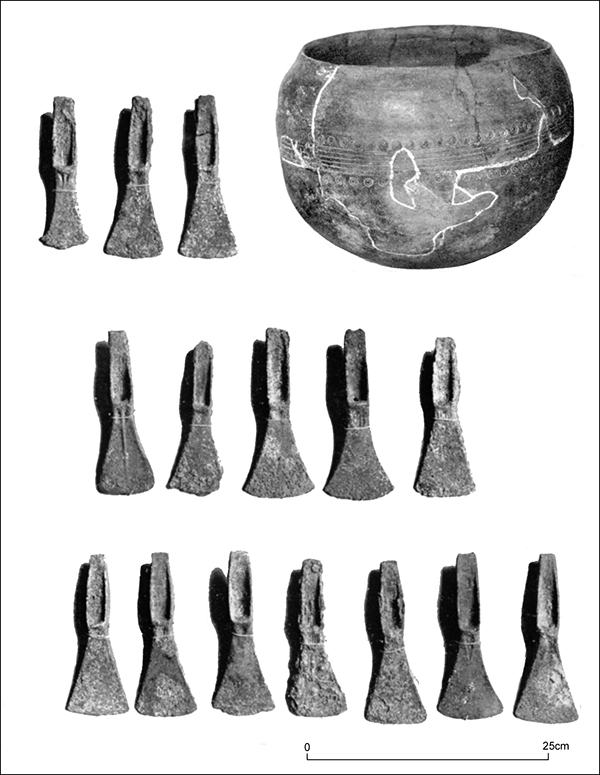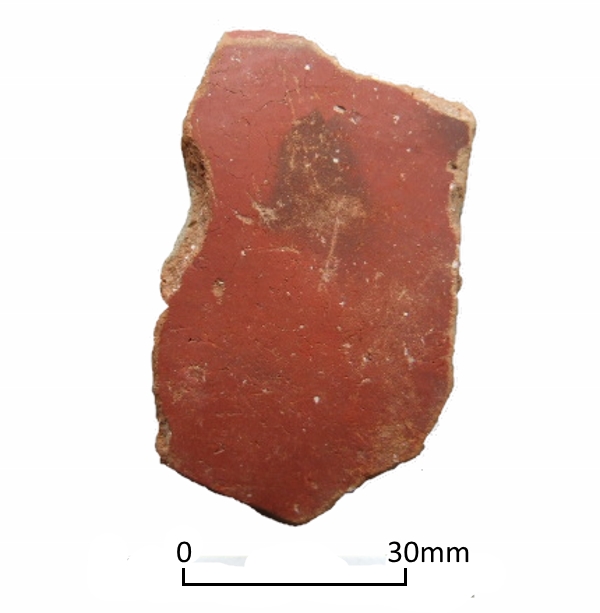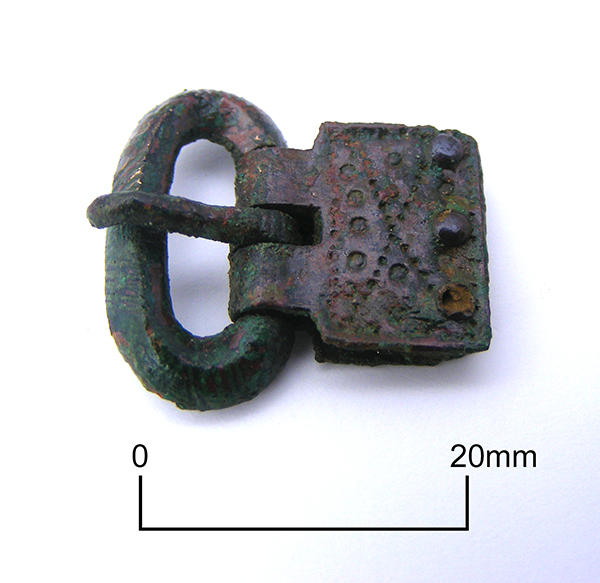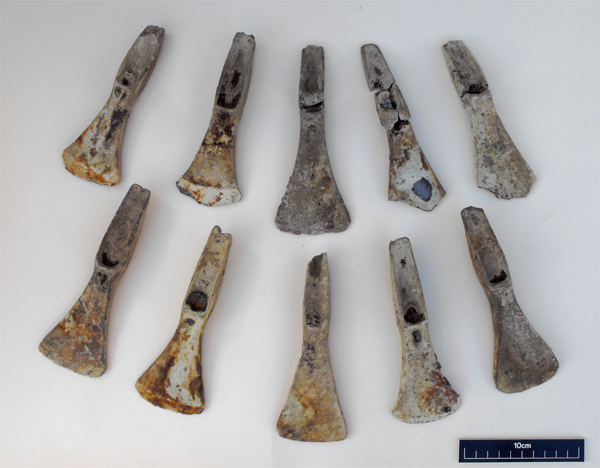
The image for Day 222 of the VM_365 project shows all of the the hoard of ten Early Bronze Age palstave axes that was found in 1988 on the wave cut shelf on the foreshore at St Mildred’s Bay.
The unusual pattern of corrosion on the surface of the axes is due to the sea-waterlogged deposit the bronzes were found in. A detailed image of one axe from this group (second from the right of the top row) was previously featured on Day 219.
The bronze hoard was excavated by Dr Dave Perkins, the first Director of the Trust for Thanet Archaeology, during an extensive survey of archaeological features that were revealed in 1988 after a storm had scoured the covering of sand from the chalk of the wave cut shelf.
Several truncated features were excavated and recorded,including pits ditches and a small remannat of preserved Brickearth geology. The archaeological survey preserved a small sample of the prehistoric settlement in the landscape that had been destroyed by the encroaching sea.
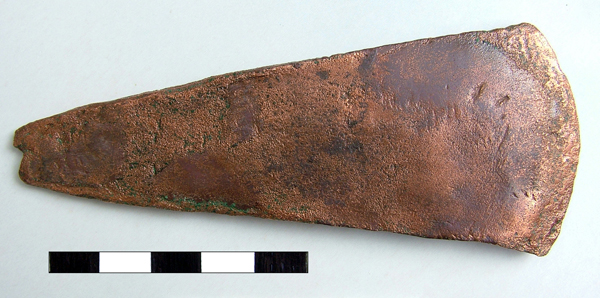
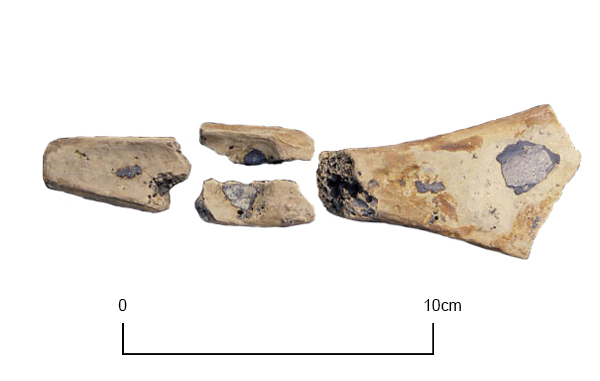 The image for Day 219 of the VM_365 project shows one of the bronze palstave axes that were found packed together in a hoard found at St Mildred’s Bay near Birchington. The conditions of the axe is very poor, the cast metal is crumbling and discoloured and it has broken into several pieces.
The image for Day 219 of the VM_365 project shows one of the bronze palstave axes that were found packed together in a hoard found at St Mildred’s Bay near Birchington. The conditions of the axe is very poor, the cast metal is crumbling and discoloured and it has broken into several pieces.